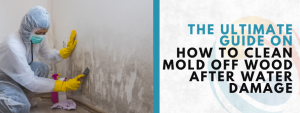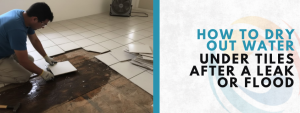
You just moved the couch to vacuum behind it—and there it is. A strange web of cracks in the paint on your wall. At first, it seems like a small cosmetic issue. After all, it’s hidden. But something about it feels off. You start to wonder: is this just about appearances, or is something more serious going on?
This is a common situation. Many homeowners discover paint cracking behind furniture and brush it off without realizing the real story it might be telling. The wall might be whispering to you about bigger problems—problems that, if ignored, could lead to costly repairs.
Let’s peel back the layers and look closer at what those cracks are saying.
Why Is Paint Cracking Behind Furniture So Common?
Walls need to breathe. When large pieces of furniture are pushed tightly against them, air can’t circulate freely. That can create an environment where heat and moisture get trapped. Over time, this leads to problems. And one of the first signs you’ll see is—you guessed it—paint cracking behind furniture.
Here’s what usually causes it:
- Temperature Differences: Furniture blocks airflow, which can make the wall behind it hotter or colder than other parts of the room.
- Moisture Build-Up: Without airflow, moisture gets trapped and starts breaking down the paint.
- Age of Paint: Older paint is more brittle and likely to crack when stressed by heat or moisture.
- Improper Surface Preparation: If the wall wasn’t cleaned or primed well before painting, the paint may not have bonded properly.
So, the location of the cracks—behind the furniture—isn’t random. It’s where stress builds up.
What Paint Cracks Look Like (And What They Might Mean)
Not all paint cracks are created equal. Their appearance can tell you a lot about the underlying issue. Let’s explore a few of the most common types you’ll find behind furniture.
Description List: Types of Cracks and What They Indicate
- Hairline Cracks: These are thin, spiderweb-like cracks that may only affect the top layer of paint. Often a cosmetic issue, but if they spread, it might be time to dig deeper.
- Flaking or Peeling: If the paint is coming off in pieces, it could mean high humidity or a moisture problem.
- Alligatoring: This is when cracks form a pattern that looks like alligator skin. It usually happens when paint is applied too thick or over an undercoat that hadn’t dried.
- Vertical or Horizontal Cracks: These might suggest structural shifts in the wall or foundation. Worth investigating.
- Bubbling Then Cracking: When paint bubbles before it cracks, moisture is likely trapped beneath the surface.
When you find paint cracking behind furniture, pay attention to the shape, depth, and spread of the cracks. They’re trying to tell you something.
Is It Just Cosmetic? Or a Sign of Something Worse?
It’s easy to think, “It’s hidden, so who cares?” But cracks in paint—especially paint cracking behind furniture—might be pointing to hidden moisture issues, mold, or even minor wall damage that could become serious over time.
Let’s break it down:
Table: Cosmetic Flaw vs Bigger Problem
| Symptom | Cosmetic or Serious? | What You Should Do |
| Fine hairline cracks | Usually cosmetic | Monitor for spreading |
| Cracks with discoloration | Possibly mold/moisture issue | Investigate for water damage |
| Flaking and bubbling | Likely due to moisture | Inspect for leaks |
| Consistent cracking across the wall | Potential structural issue | Call a professional for evaluation |
| Strong odor when furniture moves | Possible hidden mold | Schedule a mold inspection |
If you notice any musty smells or discoloration, especially when moving the furniture, that’s not just a paint issue. That’s your home sending a distress signal.
If you see paint cracking that’s also flaking or damp, it could be a sign of water intrusion. Learn more about the right steps for dealing with damage caused by water.
Moisture: The Hidden Enemy Behind Furniture
Moisture is sneaky. And walls hidden behind furniture make the perfect place for it to hide. Because there’s little air movement, moisture from daily activities—like cooking, showering, or even seasonal humidity—can settle and stay.
Here’s what might be causing that moisture:
- Leaky Windows Nearby
- Condensation from HVAC Vents
- High Indoor Humidity
- Plumbing Behind the Wall
- Poor Wall Insulation
When moisture seeps into drywall, the paint on top starts to fail. That’s when you see paint cracking behind furniture, sometimes years after the moisture began doing damage.
If you see signs like bubbling, soft walls, or mildew odor, don’t ignore them. You may need an expert evaluation. You can explore helpful solutions from this expert resource for indoor water problems.
What If There’s Mold?
One of the scariest causes of paint cracking behind furniture is hidden mold growth. Mold loves dark, damp, and poorly ventilated spaces—which describes the area behind furniture perfectly.
Signs that you might have mold:
- Cracks that feel soft or damp
- Musty odor near the wall
- Black or green spots appearing through the paint
- Paint cracking that keeps coming back after repairs
If these signs show up, you might be dealing with more than just a cosmetic issue. Mold can affect indoor air quality and cause health problems, especially in children, the elderly, and those with allergies.
When in doubt, it’s safer to bring in a professional. Learn more about what to watch for in these situations by checking how water issues silently lead to wall damage.
How to Fix Paint Cracking Behind Furniture
Fixing paint cracking behind furniture depends on the cause. If it’s cosmetic, some sandpaper and paint will do. But if moisture or mold is involved, it’s a bigger job.
Steps for Basic Repairs
- Move Furniture: Give the wall breathing room.
- Clean the Area: Use a damp cloth to wipe off dust, dirt, and loose paint.
- Sand the Cracks: Use fine-grit sandpaper to smooth out the cracked area.
- Apply Filler or Spackle: Fill in deeper cracks with wall filler.
- Prime the Surface: Prevent future peeling by using a moisture-resistant primer.
- Repaint Carefully: Use quality paint that can handle your home’s humidity level.
But if you discover deeper issues like soft drywall, watermarks, or a persistent smell, you might need help from a restoration specialist.
When to Call a Pro
- Cracks return after repainting
- Wall feels spongy or soft
- Mold is visible or suspected
- Moisture levels stay high
- You’re unsure about the extent of damage
Preventing Cracks from Coming Back
The best solution to paint cracking behind furniture is to prevent it in the first place. Here’s how:
Alphabetical List: Prevention Tips
- Airflow: Leave a few inches between the wall and furniture.
- Breathing Walls: Don’t block air vents or heat sources.
- Control Humidity: Use a dehumidifier in damp areas.
- Dust and Clean Regularly: Clean behind furniture every few months.
- Evaluate Paint Type: Use quality, flexible, and washable paint finishes.
- Fix Leaks Fast: Small plumbing leaks can quickly lead to wall issues.
- Go Easy on Wall Decor: Too many heavy hangings can strain the wall.
- Have Annual Inspections: Especially in older homes or areas prone to humidity.
These small habits help your walls stay healthy, breathable, and beautiful.
Final Thoughts: Don’t Ignore the Signs
That little crack behind the dresser? It’s not just a flaw—it’s feedback. Your home is telling you what it needs. Whether it’s better ventilation, a different paint, or even professional help, don’t ignore paint cracking behind furniture. Listening to your walls could save you hundreds—maybe even thousands—of dollars later. Remember: what you don’t see can hurt you. Take a peek behind that couch today.If you’ve recently noticed strange wall textures, cracking paint, or odd smells when moving furniture, don’t wait. Explore professional help and fast solutions before a small issue becomes a big repair bill. Let your walls breathe. They’ve got a lot to say.
Frequently Asked Questions: Paint Cracking Behind Furniture
Why is the paint behind my furniture cracking while the rest of the wall looks fine?
Furniture blocks airflow, causing trapped moisture and uneven temperature which weaken the paint over time. This makes the wall behind furniture more prone to cracking than exposed areas.
Should I be worried about paint cracking behind furniture, or is it just cosmetic?
While some cracks are purely cosmetic, recurring or wide cracks could signal moisture issues or hidden wall damage. It’s best to inspect closely or consult a professional if unsure.
Can I repaint over cracked paint behind furniture without fixing it first?
No, repainting without fixing the root issue will only lead to more cracking. Proper sanding, priming, and moisture control are essential before repainting.
Could paint cracking behind furniture mean there’s mold or water damage?
Yes, especially if you notice musty smells, soft drywall, or discoloration with the cracks. These signs often point to hidden moisture or mold problems.
How can I prevent paint from cracking behind my furniture again?
Leave space between furniture and walls to improve airflow and reduce moisture buildup. Use quality paint and check regularly for early signs of damage.






